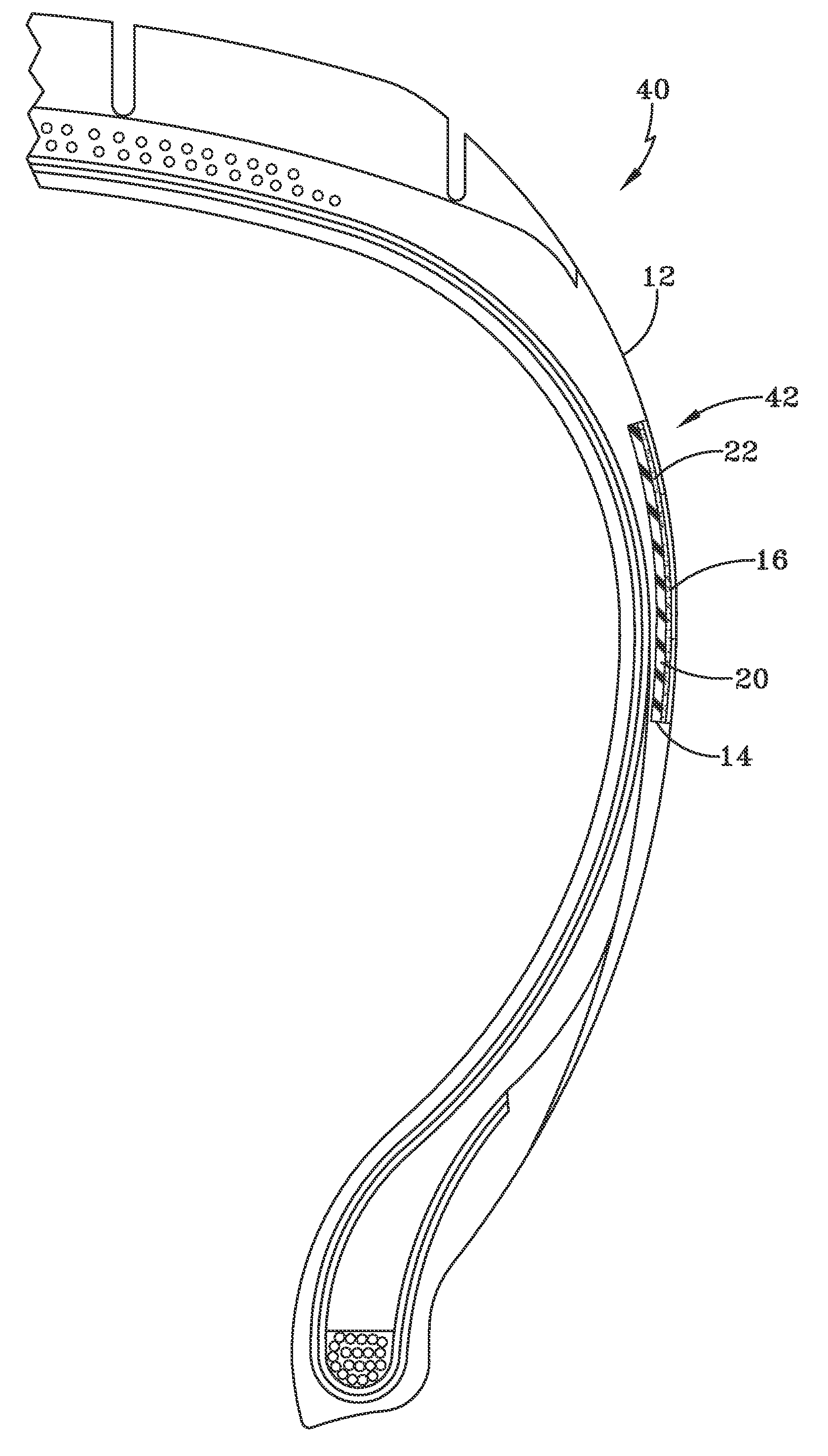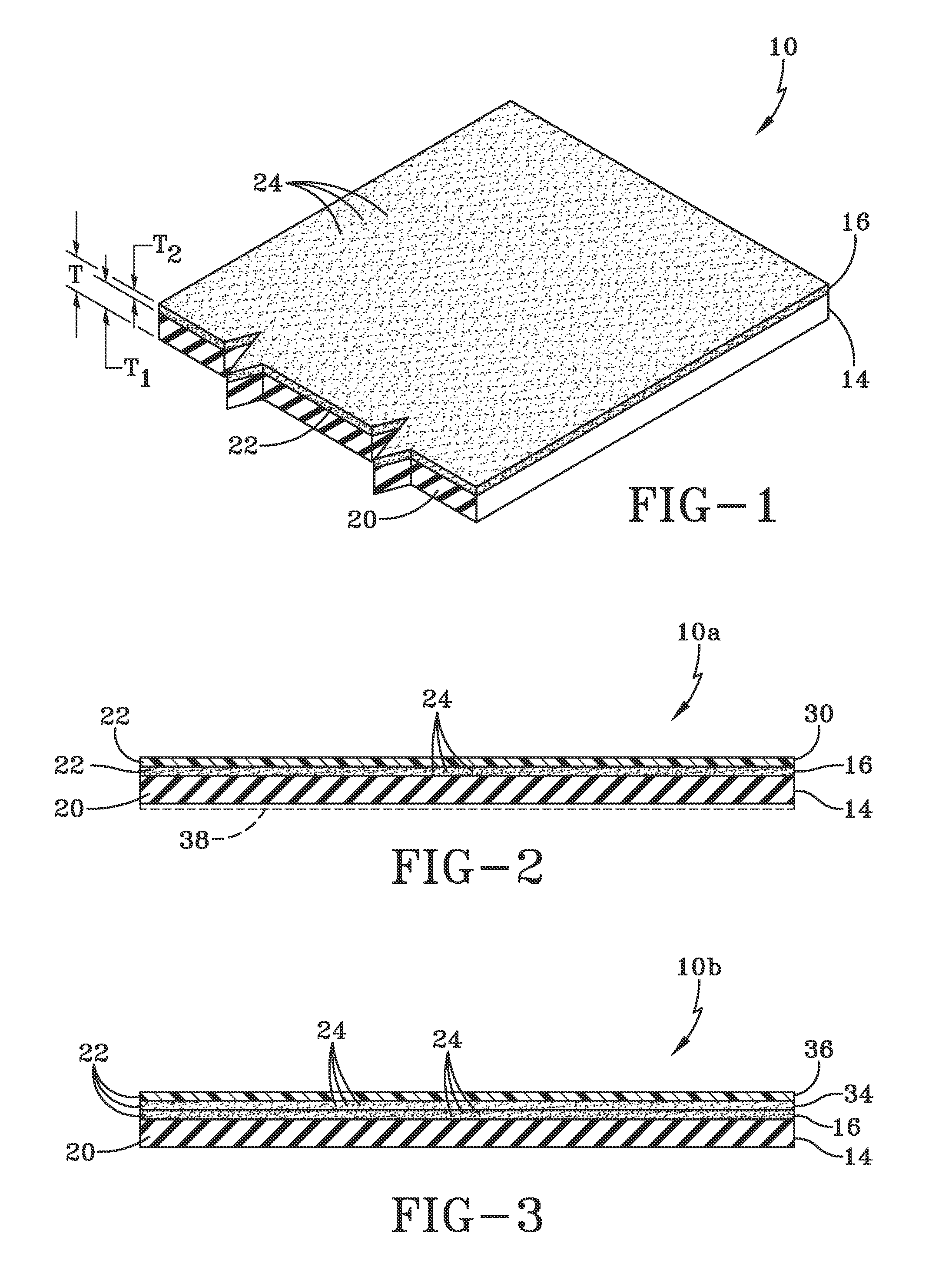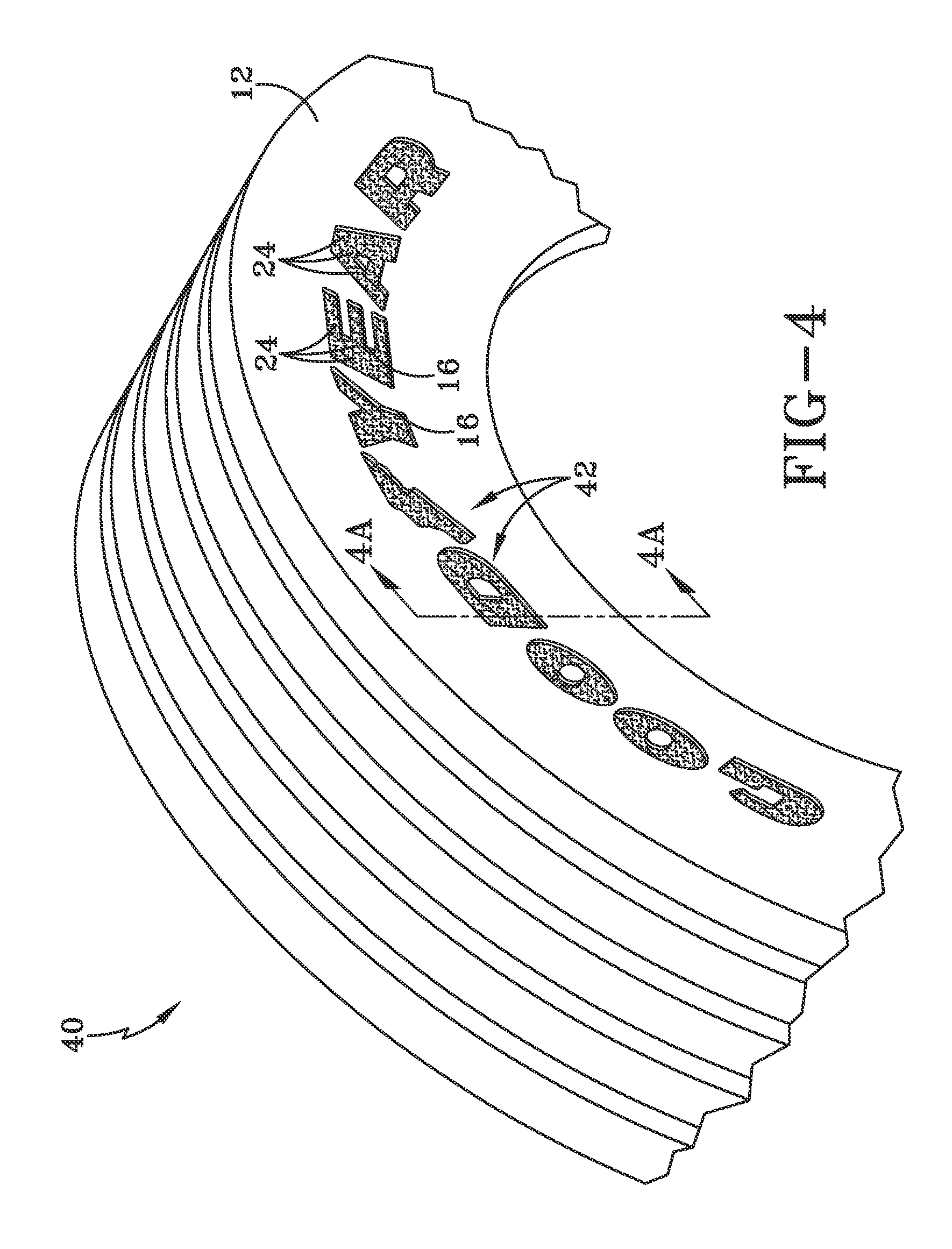Multi-Layered Veneer For A Tire Sidewall
- Summary
- Abstract
- Description
- Claims
- Application Information
AI Technical Summary
Benefits of technology
Problems solved by technology
Method used
Image
Examples
example i
[0033]In a first example and with reference to FIG. 1, the multi-layered veneer 10 includes tie layer 14 and first thermoplastic layer 16 bonded to the tie layer 14. The tie layer 14 is 98% by weight Nordel™ 4820P available from Dow of Freeport, Tex. and 2% by weight Royaltuf® 498, which is an additive (not illustrated) available from Chemtura Corporation of Middlebury, Conn. Nordel™ 4820 is a commercially available pelletized EPDM 20, which includes 80% by weight ethylene and 4% by weight diene component and has a Mooney Viscosity (ML1+4 at 125° C.) of 20. Royaltuf® 498 is a commercially available pelletized maleated EPDM. The first thermoplastic layer 16 is 98% by weight Zytel®, which is Nylon 6 available from DuPont of Wilmington, Del., and 2% by weight Helicone® HC, which is an optically variable pigment 24 available from Wacker Chemie GmbH of Munich, Germany. The tie layer 14 is about 10 mils thick and the first thermoplastic layer 16 is about 1 mil thick for a total thickness ...
example ii
[0035]In this example and with reference to FIG. 2, the multi-layered veneer 10a includes second thermoplastic layer 30, which is bonded to first thermoplastic layer 16 so that the first thermoplastic layer 16 is situated intermediate the second thermoplastic layer 30 and tie layer 14. The first thermoplastic layer 16 and tie layer 14 are identical to those in Example I above. The second thermoplastic layer 30 is 100% by weight Zytel®, i.e. Nylon 6. The second thermoplastic layer 30 is about 1 mil thick for a total veneer thickness of about 12 mils and further provides additional stability and durability to the veneer while also adding visual depth. The adhesive coating 38 is optionally excluded from this Example.
[0036]Each layer 14, 16, 30 is prepared and co-extruded together as described above in Example I. Likewise, the pre-formed multi-layered veneer 10a can be bonded to non-staining sidewall 12 (FIG. 4) of an uncured tire, which subsequently is cured with the decorative veneer ...
example iii
[0037]In this example and with reference to FIG. 3, the multi-layered veneer 10b includes second and third thermoplastic layers 34, 36. Accordingly, the second thermoplastic layer 34 is bonded to the first thermoplastic layer 16 so that first thermoplastic layer 16 is situated intermediate the second thermoplastic layer 34 and tie layer 14 while the third thermoplastic layer 36 is bonded to the second thermoplastic layer 34 so that the second thermoplastic layer 34 is situated intermediate the first and third thermoplastic layers 16, 36. The tie layer 14 is identical to Example I above. The first thermoplastic layer 16 is 96% by weight Zytel®, i.e. Nylon 6, 2% by weight Red 38™24, which is a pyrazolone available from Akrochem of Akron, Ohio, and 2% by weight White 6™24, which is a titanium dioxide also available from Akrochem of Akron, Ohio. The second thermoplastic layer 34 is 98% by weight Zytel®, i.e. Nylon 6, and 2% by weight Helicone® HC, i.e. an optically variable pigment 24. ...
PUM
| Property | Measurement | Unit |
|---|---|---|
| Temperature | aaaaa | aaaaa |
| Percent by mass | aaaaa | aaaaa |
| Percent by mass | aaaaa | aaaaa |
Abstract
Description
Claims
Application Information
 Login to View More
Login to View More - R&D
- Intellectual Property
- Life Sciences
- Materials
- Tech Scout
- Unparalleled Data Quality
- Higher Quality Content
- 60% Fewer Hallucinations
Browse by: Latest US Patents, China's latest patents, Technical Efficacy Thesaurus, Application Domain, Technology Topic, Popular Technical Reports.
© 2025 PatSnap. All rights reserved.Legal|Privacy policy|Modern Slavery Act Transparency Statement|Sitemap|About US| Contact US: help@patsnap.com



